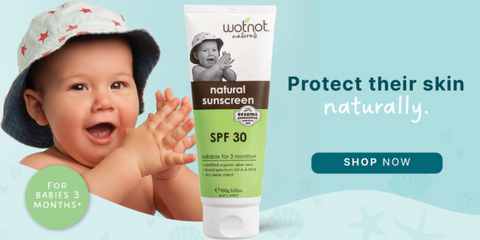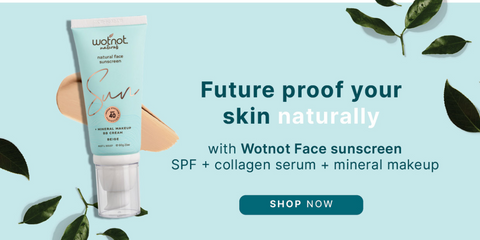If there is one thing we have all been hearing since we were very young, its just how important it is to use sunscreen. But what do you really know about it?
What’s the difference between a Mineral and a Chemical sunscreen?
A mineral sunscreen is just what it sounds like—a sunscreen that uses minerals as its active (protective) ingredients. The minerals most often used are zinc oxide and titanium dioxide. Both of these ingredients occur naturally, although they can also be created synthetically.
Mineral sunscreens are sometimes called physical sunscreens because they provide a physical barrier between your skin and the sun’s rays. Think of these minerals as tiny mirrors resting on the surface of your skin, bouncing away harmful UV rays!
Chemical sunscreens penetrate your skin and use synthetic compounds like oxybenzone, octisalate, avobenzone and 4-methylbenzylidene camphor, to create a chemical reaction in our skin. This reaction transforms the UV rays from the sun into heat and is released into the air.
There is an ongoing debate about sunscreen ingredients, specifically chemical UV actives and their effect on hormones and we have all heard about the damaging effects those sunscreens containing two common chemicals have on coral reefs.
Australian Standard
The Australian Standard for sunscreens allows a maximum sun protection factor (SPF) rating of 50. While this sounds like a significantly higher level of protection than an SPF30 the difference is not really in the amount of UV protection. An SPF 50 sunscreen will filter 98% of UV radiation while an SPF30 product filters 96.7% so the difference is not large.
What Does SPF Mean?
SPF stands for Sun Protection Factor. SPF numbers are an approximate indication of how much protection from the sun a product will provide for your skin. Everyone’s skin is different and each person’s skin can be exposed to the sun for different lengths of time before burning. Those with fair skin will burn faster than people with olive skin. Sunscreen extends the time before burning by a multiple of the SPF. For example, if you have fair skin and would normally burn in 10 minutes without any sun protection then an SPF 30 will give you 30 x 10 minutes protection or 5 hours.
The issue is that all sunscreens will rub off over time with normal activity and perspiration and so in some cases, the higher SPF can give a false sense of security. The most important thing to remember is that no sunscreen provides total protection and will rub off over time, that's why it is always important to reapply regularly (every 2 hours) and cover up using appropriate clothing and eyewear especially during the hottest part of the day.
Can using SPF every day cause Vitamin D deficiency?
No, you will still be able to absorb enough Vitamin D from incidental places such as your scalp, nails or that spot on your back where you just cant reach when applying your sunscreen.
Infants and People with Sensitive Skin
It’s important to note that an infant’s skin is different from an adult’s. Our bodies produce a pigment called melanin that protects our skin from ultraviolet damage by causes it to darken/tan. An infant produces less melanin than an adult which means that their skin will burn more quickly.
An infant’s skin is thinner and contains more water than an adult. Also the top layer of an infant’s skin called the epidermis doesn’t bond as tightly to the layer below called the dermis. So unlike adult skin that has a tight seal between these layers, an infant’s skin is easier to pass. This is significant when also coupled with the fact that infants lack fully developed detoxification systems.
Babies and infants should be kept out of direct sun exposure but if you need to use a sunscreen choose a sunscreen for sensitive skin with a physical active like zinc that is dispersed in a natural lotion. 
People with sensitive skin often find that they react to conventional sunscreens, so a natural sunscreen alternative with gentle ingredients and an SPF of 30 will be their best option too. Always check the label and look out for toxic ingredients that may have been added to make the sunscreen more smooth or wearable such as parabens, phthalates, sodium laureth sulfate, and fragrance (unless it’s a natural preservative). Unfortunately, unlike in the USA and Europe, Australian regulations which are set by the Therapeutic Goods Administration (TGA), do not require sunscreen brands to disclose all ingredients on the packaging. We believe that this is wrong as it effectively leaves consumers in the dark as to what they are putting on their and their kids bodies. We have contacted the TGA to address this and will continue working to see regulations change.
How much sunscreen should I apply?
All too often, we don’t apply enough sunscreen and forget to reapply. The Cancer Council recommends the following:
“Sunscreen needs to be applied 20 minutes before going outdoors. Use a generous amount of sunscreen. When applying sunscreen, you need at least one teaspoon per limb, one for the front of the body, one for the back and one for the head. A full body application for an adult should be at least 35mL or seven teaspoons”. (https://www.cancer.org.au/cancer-information/causes-and-prevention/sun-safety/about-sunscreen)
Always remember to wear appropriate clothing, hats and eyewear, stay out of midday sun and reapply sunscreen regularly. And then just enjoy the great outdoors!
Find out more about choosing the right sunscreen for you on our website, or visit @environmentalworkinggroup sunscreen hub, for a 101 on sunscreen ingredients! www.ewg.org/sunscreen/








